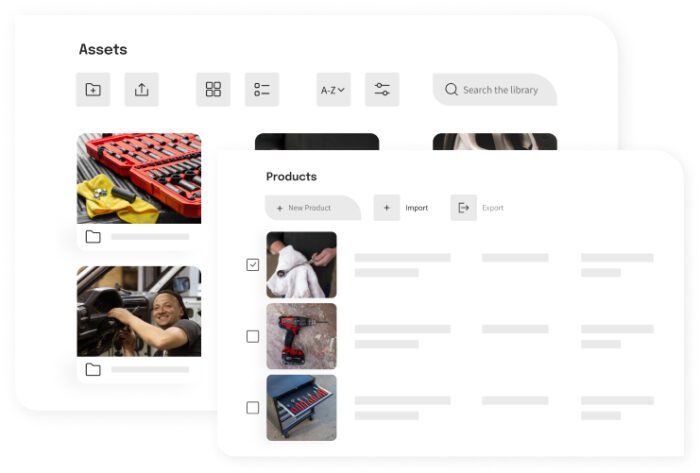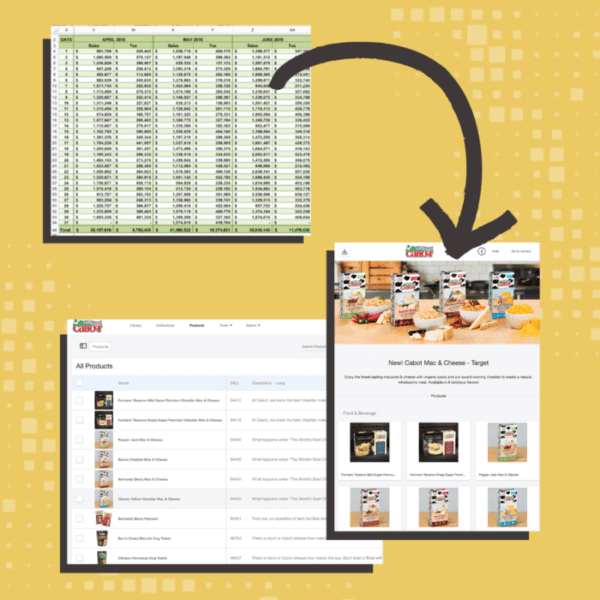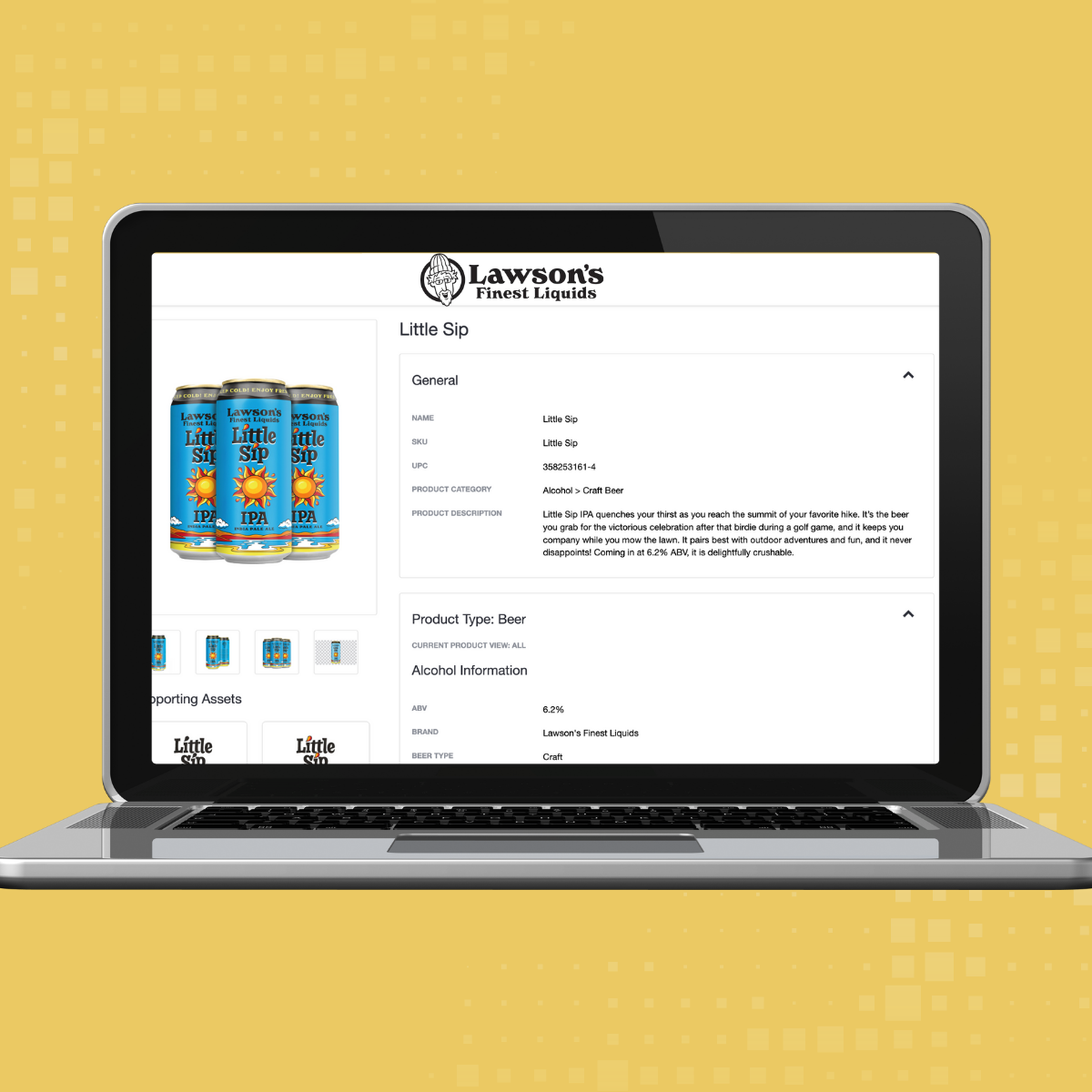5 Reasons Product Information Management is a Must for Manufacturing Brands


Manufacturing companies distribute information and products to more channels than brands in most other industries. Being able to deliver the right information and content to the right channels is at best a lot of work. But at worst? A tedious, migraine-inducing, never-ending, juggling act.
No matter the size of the company or category they specialize in, manufacturers need to manage large product catalogs with an ever-changing volume of product info and assets. With such a high volume of materials involved, organizing information is prone to errors.
If you're part of a manufacturing brand you know how this plays out. When a new product is added, or updates are made to an existing one, a long list of detailed information needs to be created and then compiled somewhere that is organized and available for sharing. Ideally, the location this information lives is available to anyone who needs it, whenever they need it.
If you're currently operating out of spreadsheets, shared drives, and a small collection of different platforms you know this just might not always be the case...
Life without Product Information Management
An Avalanche of Spreadsheets
Often times spreadsheets are a go-to for tracking and sorting information for businesses. And they work just fine. But for product information spreadsheets are lacking some important functions to make them suited to the task.
For manufacturing companies that are working with large quantities of SKUs that often need to be updated and shared, managing it all in a spreadsheet leaves the door open to errors. Spreadsheets are also often challenging to share with other users and collaborate simultaneously.
Shared Drives Full of Outdated Material
Content entering the market with outdated or inconsistent product information is a common symptom of a manufacturer operating without a PIM. Without a single source of truth to rely on, key data is ultimately pulled from wherever it can be found; the marketing team may be relying on a totally different set of records than the sales team. That's problematic when time and money are being poured into growing a brand where consistency is a key element of success.
Relying on Employees as an “Agency of Record”
The most challenging and risky format of them all is when a single employee becomes an "agency of record". Relying on a single person as your source of truth is a bottleneck waiting to happen, or rather it is a bottleneck that is already happening.
The Top 6 Benefits Manufacturers Gain With a PIM

1. A Single Source of Truth
With a PIM, your team has one single source of truth for your full product line and all the related product information and content. By having one universal source for materials and information your team can trust what they’re sourcing and sharing is accurate, current, and approved.
Updating information and managing versions becomes simplified with one location as the source of truth. This helps ensure that brand and product information is maintained throughout employee transitions or expanding product lines.
2. Streamline Omnichannel Delivery
When you create a single source of truth for your brand and products in a PIM, your company is set up for delivering your brand’s assets and product information to every channel in the right way.
For manufacturers, this becomes especially impactful due to the volume of channels needed to show up to compete in ever-growing e-commerce, retail, and market spaces. A PIM ensures easy management of all product data and digital assets for any platform, team, or partner.
3. Easier Asset Sharing & Information Distribution
How your business delivers your brand materials and product information into the right hands. This key step is especially important for collaboration between marketing & sales teams, retailers, and influential partners who are working to sell or set up your products for distribution or sales.
Without a PIM, manufacturing teams are left trying to manage and organize the necessary product information in various spreadsheets to meet every individual retailer's requirements. This process slows down the time to delivery and generates exponential opportunities for misinformation to spread from spreadsheet to spreadsheet. With a PIM, your data is structured ahead of time to meet the needs of any retailer.
4. Put Product Data in Context
Your team finally sells into a new retailer or lands a new contract and they’ve worked hard to gather all of the information and materials needed to get set up. They press send on the materials needed only to discover weeks later that an outdated asset or number was sent by mistake and causing inconsistencies in the way your product is described.
It’s a common error that happens when manufacturing businesses are juggling such a high volume of product information, but also one that can be prevented. With a PIM in place, it’s easy to deliver the correct versions of product information and assets for the specific channel needed, every time.
5. Improve Your Customer Experience
All of these PIM benefits improve your customers' experience with your brand and products by ensuring a faster time to market, the most current and accurate product information, and a more consistent brand experience at every touchpoint.
For example, an e-commerce buyer sees the right product information and product images on an ecomm site and knows this is the right product to buy. Your competition is showing inconsistently edited images and limited or conflicting information. That's an instant loss of trust, and interest, from a consumer's perspective. A PIM helps to give your customers a better user experience by ensuring they have confidence in your brand and products.
Deliver Marketing Everywhere: More Than Just a PIM
A PIM offers an essential solution for manufacturing marketing teams by offering a single source of truth that organizes and centralizes the ever growing volume of product information and helps businesses accelerate their time to market. It makes sharing your product and brand materials easier, improves your customer experience, and helps accelerate sales. But, product information management is just one small part of a greater whole, and just having a PIM alone won’t get your business everywhere you want to go.
Here at Image Relay, we’ve seen and experienced the challenges facing marketing teams at manufacturers and built a single unified platform that truly changes how you go to market. We combined the best of product information management, digital asset management (DAM), and creative operation tools all into one holistic and easy-to-use solution.
We call it Marketing Delivery. And it helps get your marketing to market faster than ever before. Instead of tackling an individual challenge, we built Marketing Delivery as a comprehensive solution to address the lifecycle of how you deliver your brand.



